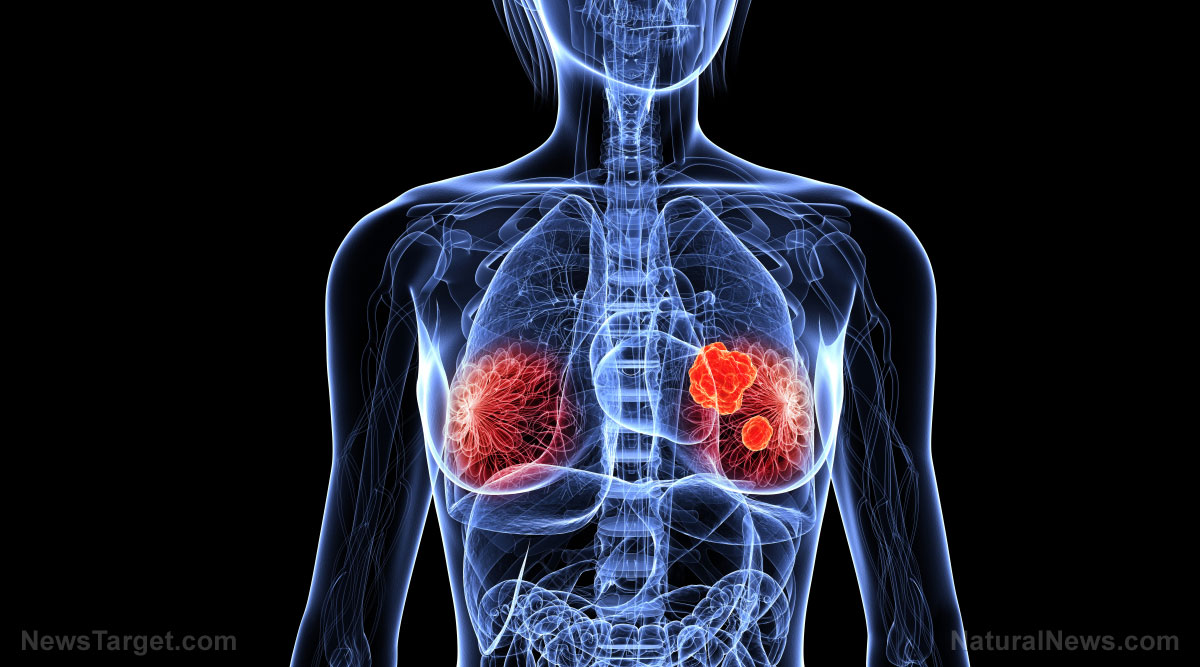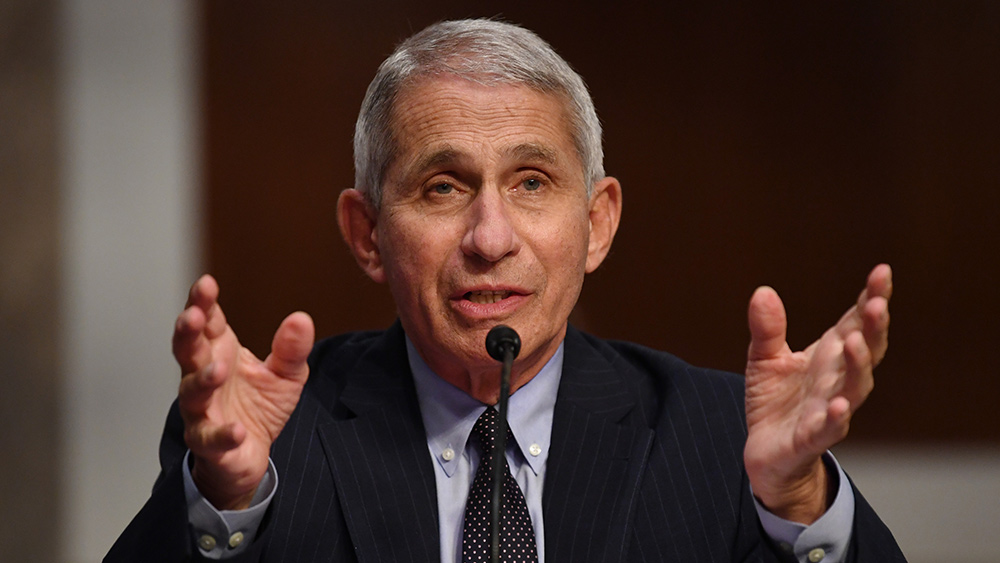The brain’s nightshift: How sleep triggers a hormonal cascade to build muscle, burn fat and sharpen the mind
09/10/2025 / By Willow Tohi

- UC Berkeley researchers mapped the brain circuits linking deep sleep to growth hormone (GH) release, explaining why poor sleep disrupts muscle growth, fat metabolism and cognitive function.
- GH surges during sleep—particularly in REM and early non-REM phases—via two hypothalamic hormones (GHRH and somatostatin), which act as accelerator and brake. GH then signals the brain’s locus coeruleus to regulate wakefulness, creating a self-balancing system.
- Chronic sleep deprivation lowers GH, worsening risks for obesity, diabetes, frailty and neurodegenerative diseases like Alzheimer’s. Conversely, optimized sleep may enhance muscle repair, fat burning and mental clarity.
- The discovery opens doors for treatments targeting sleep disorders tied to metabolic dysfunction, possibly via gene therapies or hormonal interventions to modulate the locus coeruleus.
- GH declines with age, but protecting sleep could mitigate muscle loss, bone weakening and metabolic decline—critical for athletes, older adults and those managing chronic conditions.
For over a century, scientists have known that growth hormone (GH) floods the bloodstream during deep sleep, fueling muscle repair, fat metabolism and even cognitive function. Yet the how—the neural choreography behind this nocturnal surge—remained a black box. Now, researchers at the University of California, Berkeley, have illuminated the brain’s hidden circuitry, revealing a feedback loop where sleep and GH regulate each other in a delicate balance. The findings, published September 8, 2025, in Cell, not only explain why skimp on sleep and your body pays the price, but also point to potential therapies for metabolic disorders, neurodegenerative diseases and age-related decline.
The study’s implications stretch far beyond the gym. In an era where sleep deprivation is epidemic—linked to rising rates of obesity, diabetes and Alzheimer’s—this research offers a biological blueprint for how restorative sleep acts as a master lever for physical and mental health. “We’re providing a basic circuit to work on in the future to develop different treatments,” said Xinlu Ding, the study’s first author and a postdoctoral fellow in UC Berkeley’s Department of Neuroscience. “People know that growth hormone release is tightly related to sleep, but only through drawing blood. We’re directly recording neural activity to see what’s going on.”
The hypothalamic orchestra: Accelerator, brake and timekeeper
Deep in the brain’s hypothalamus, two types of neurons conduct the nightly symphony of GH release:
- Growth hormone-releasing hormone (GHRH) neurons: The accelerator, signaling the pituitary gland to secrete GH.
- Somatostatin (SST) neurons: The brake, divided into two subtypes that fine-tune inhibition.
Using optogenetics and calcium imaging in mice, the team found that these neurons behave differently during sleep phases:
- REM sleep: Both GHRH and SST surge, creating sharp pulses of GH.
- Non-REM sleep: SST activity drops, while GHRH rises moderately, allowing steadier GH release.
“This was surprising,” Ding noted. “Somatostatin is usually thought of as an inhibitor, but here, it acts almost like a timekeeper, shaping the rhythm of GH pulses.”
The plot thickens with the locus coeruleus (LC), a brainstem hub governing arousal. As GH accumulates during sleep, it stimulates the LC, gently nudging the brain toward wakefulness. But if the LC becomes overstimulated, it flips into a sleep-promoting state—a yin-yang mechanism ensuring balance. “Sleep drives growth hormone release, and growth hormone feeds back to regulate wakefulness,” explained co-author Daniel Silverman. “This balance is essential for growth, repair and metabolic health.”
Why this matters: From athletes to Alzheimer’s
GH isn’t just for children’s growth spurts. In adults, it:
- Preserves muscle mass (critical for athletes and aging populations).
- Regulates fat distribution (low GH is linked to visceral fat and insulin resistance).
- Supports cognitive function (GH may enhance arousal and mental clarity upon waking).
- Protects against frailty (declining GH levels correlate with osteoporosis and cardiovascular risk).
The study’s findings align with decades of observational data. For example:
- A 2015 study in PLOS ONE found that sleep restriction in healthy men reduced GH secretion by 75% and impaired muscle recovery.
- Research from the Journal of Clinical Endocrinology & Metabolism (2019) linked chronic sleep deprivation to accelerated biological aging, partly via disrupted GH rhythms.
“Understanding this circuit could lead to therapies for sleep disorders tied to metabolic dysfunction,” Silverman said. For instance, modulating the LC’s excitability—via gene therapy or hormonal interventions—might restore GH balance in conditions like diabetes or Parkinson’s, where sleep and metabolism are often derailed.
The sleep-GH connection: A historical blind spot
The link between sleep and GH was first observed in the 1960s, when endocrinologists noted that GH levels peaked during deep sleep. But without tools to map neural activity in real time, the mechanism remained speculative. Early theories suggested GH release was merely a byproduct of sleep’s restorative processes. The UC Berkeley study overturns that assumption, proving that sleep and GH are actively coupled—each shaping the other.
This discovery arrives at a critical juncture. The CDC reports that 1 in 3 Americans gets less than the recommended 7 hours of sleep, while metabolic diseases like diabetes and obesity have reached record highs. Meanwhile, the anti-aging industry has fixated on synthetic GH injections—a controversial practice with side effects ranging from joint pain to increased cancer risk. The new research suggests that protecting natural sleep rhythms may be a safer, more effective strategy for maintaining GH levels.
Practical takeaways: How to optimize your nightly GH surge
While the study was conducted in mice, the neural circuits are conserved in humans. To leverage the sleep-GH connection:
- Prioritize deep sleep: GH peaks in the first 1.5 hours of non-REM sleep. Aim for 7–9 hours of uninterrupted rest.
- Time your workouts: Resistance training boosts GH, but only if followed by adequate sleep. Post-exercise, prioritize rest.
- Avoid late-night light exposure: Blue light from screens suppresses melatonin, disrupting sleep architecture and GH release.
- Manage stress: Chronic cortisol (the “stress hormone”) blunts GH secretion. Practices like meditation or breathwork may help.
- Consider natural GH boosters: Foods rich in arginine (nuts, seeds), glutamine (bone broth) and melatonin (cherries, walnuts) may support endogenous GH production.
Could we hack the sleep-GH loop?
The UC Berkeley team’s next steps involve exploring gene therapies to modulate the LC or hypothalamic neurons in metabolic disorders. “This circuit could be a novel handle to dial back the excitability of the locus coeruleus,” Silverman said—a potential game-changer for conditions like insomnia-linked diabetes or Alzheimer’s, where sleep and GH dysregulation are hallmarks.
Yet the most immediate application is a cultural one: redefining sleep as non-negotiable. “We treat sleep as a luxury, but it’s as critical as nutrition or exercise,” Ding said. “This study shows it’s the foundation for muscle, metabolism and mind.”
A wake-up call for public health
In a world obsessed with biohacking—where people inject peptides, track biometrics and optimize diets—the simplest lever for health may still be the most overlooked. The UC Berkeley study doesn’t just explain why sleep builds muscle and burns fat; it underscores that sleep is not passive. It’s an active, neurochemically orchestrated process that repairs the body and sharpens the mind. Ignore it, and the consequences ripple across metabolism, cognition and longevity.
As Silverman put it: “We’ve evolved to spend a third of our lives asleep for a reason. This is the brain’s way of telling us that reason is far more profound than we realized.”
Sources for this article include:
Submit a correction >>
Tagged Under:
Alzheimer's, brain health, cancer risk, CDC, diabetes, discovery, growth hormone, joint pain, melatonin, metabolism, mind body science, Parkinsons, science, sleep
This article may contain statements that reflect the opinion of the author





















